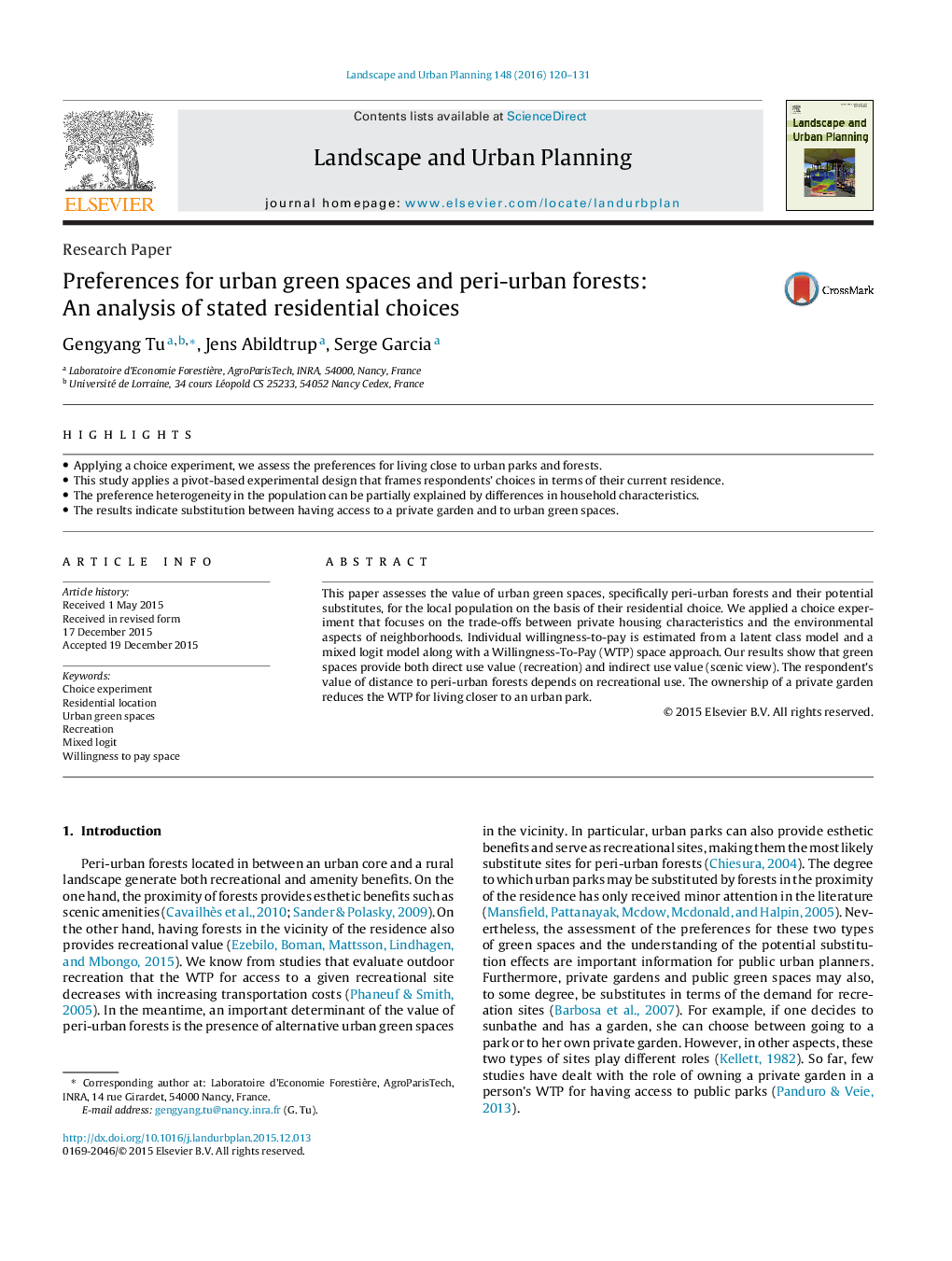| Article ID | Journal | Published Year | Pages | File Type |
|---|---|---|---|---|
| 7460771 | Landscape and Urban Planning | 2016 | 12 Pages |
Abstract
This paper assesses the value of urban green spaces, specifically peri-urban forests and their potential substitutes, for the local population on the basis of their residential choice. We applied a choice experiment that focuses on the trade-offs between private housing characteristics and the environmental aspects of neighborhoods. Individual willingness-to-pay is estimated from a latent class model and a mixed logit model along with a Willingness-To-Pay (WTP) space approach. Our results show that green spaces provide both direct use value (recreation) and indirect use value (scenic view). The respondent's value of distance to peri-urban forests depends on recreational use. The ownership of a private garden reduces the WTP for living closer to an urban park.
Related Topics
Life Sciences
Agricultural and Biological Sciences
Ecology, Evolution, Behavior and Systematics
Authors
Gengyang Tu, Jens Abildtrup, Serge Garcia,
